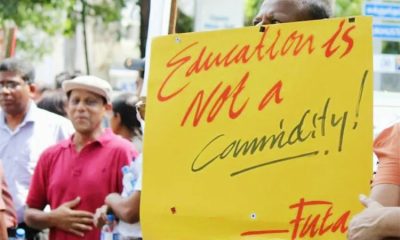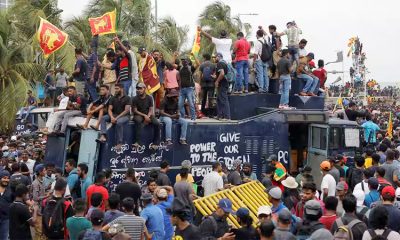Opinion
Aragalaya, Karadaraya and Mardanaya; System Change
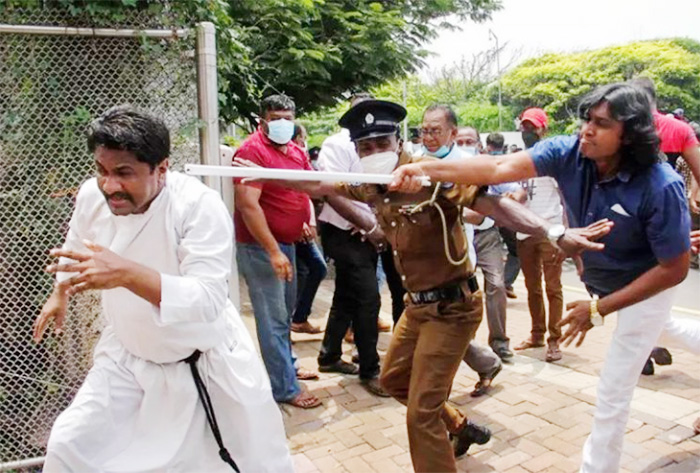
By Andrew Devadason
Vicar-St. Paul’s Church, Milagiriya Colombo
It has been one year since we got assaulted in front of the Temple Trees on May 9th, 2022. A simple candlelight protest begun in Kohuwela on March 01st 2022 grew to be an expression of major people’s power which really shook the unshakable Sri Lankan political powers since the independence. The fuel and gas queues along with over 10 hours of power cut, etc., brought everyone in Colombo under one umbrella of protest. The word Aragalaya was considered everyone’s darling. However, with the appointment of Ranil Wickremasinghe as the prime minister in May 2022 and particularly after his appointment as the president by a parliamentary vote in July 2022, the cracks in the aragalaya movement begun to appear. For some the rain seemed to have seized, particularly for the upper echelon of the business community and they began to leave the umbrella. Today the aragalaya is received with mixed feelings. Some say that Jeyagranayen thora nimawak netha(No end without victory) while some others say, Aragalaya (The struggle) is a Karatharaya (Nuisance), while the Ranil Wickremasinghe government and his supporters are hell bent on to treat it with Mardanaya (suppression), the latest being a proposed ban on protests and musical programmes on Galle Face green and the proposed controversial Anti-Terrorism Act (ATA). This brief article is not to delve into who is right and who is wrong or to statistically prove which side is stronger, because the truth is noticeably clear, it is out there, and one needs no rocket science to reckon it. But, to draw attention to the common grounds that if not both sides at least most subscribe to. We ALL want a SYSTEM CHANGE in this country. We all agree that the path Sri Lanka has taken since the independence needs to be redefined and restructured. We all agree that corruption of the powerful and the ignorance of the ordinary are the major causes that have resulted in our state today. The question is what do we do and where do we start?
Aragalaya
– Model
The transformation of the Galle Face green into a protest village positively brought hope onto the surface. It was all about that transformation is not impossible; Ants are insignificant in terms of size but together they are not only powerful but also dangerous. Needless to say, about the extent of injury that Mother Lanka is being inflicted with the issues related religion and ethnic matters. The common understanding is that these injuries cannot be healed. What a pathetic sight to see her bleeding, yet powerless to stop it. Aragalaya was able to bring everyone together. The memorial of those who died in the north due to the war, which was not even easy to commemorate by the Tamils in the north and the east, saw it being commemorated on the Galle face green with all ethnic groups participating with completely a different mindset. Muslims broke fast with the Christians, Buddhists, and Hindus. Vesak became a festival of light of hope to all religious people. A sight that gave hope to Mother Lanka. She began to smile even amid the pain.
The Aragalaya, depicted a model society. The youth, women and men took responsibility towards the nation with commitment and sacrifice. An unarmed new set of warriors of the nation was getting germinated. The rich and haves sustained the have nots. There was no shortage of food and water. Health care, education, entertainment, technology, legal aide, you just name it, all were there. Everyone took responsibility, whether supplying food, cooking, cleaning, security or discipline and order. Above all, it was all voluntary. Nothing came under compulsion, power of force or intimidation. Isn’t this all about being a free society? A new society that looked beyond class, religious and ethnic barriers. There were no differences whether one was ordinary, prominent or a religious figure. Everyone was seen equally but treated with dignity. It was a confederation of diverse groups without a central leader. Power was not concentrated on a single individual or a few individuals, yet accountability was kept on a higher pedestal. When discipline and order was breached, it was never put under the carpet, it became a public matter, everyone knew it and was dealt openly. Isn’t that we all aspire to as a nation?
Sadly, however this model fell apart. The young women and men were too sincere. They lacked knowledge about the seasoned wolves in the political arena. They were too ambitious and enthusiastic, and completely miscalculated the calm before the storm. Today, the Galle Face green is cleaned up. Some triumphing for reclaiming the lost beauty. The noises have ceased. A solid calmness but like in the desert. However, one cannot stop hearing the wind and I hear a lament in the sounds of the waves. A lament that echoes the heart of Mother Lanka, crying for her children. A lament only a sincere Sri Lankan will hear and can comprehend. A Sri Lankan who is committed to the teachings to rise above craving.
Attitudinal Change
We say that the system change must produce accountability at all levels and that no one is above the law. An efficient and corrupt free public service. The politicians must serve the people and not the other way around. All citizens must reap the benefit of development. No one is left behind. For this we say that we must have a constitution and a mechanism that is people oriented. An independent judiciary where justice is always upheld irrespective of political powers or statuses. We can keep adding. This list sounds as if we are proposing heaven on earth. However funny it may sound; I believe that the answer to the problem also lies within this notion.
What would be the most crucial factor that needs to be addressed to achieve the above heaven in Sri Lanka. I would say, ATTITUDES. The makeup of our Sri Lanka society is made up of our attitudes. How we look at public property. How selfish we are in voting for our candidates. What do the voters expect? Why the ordinary continue to be complacent in a feudal mentality. Why currently do some rich businesspeople see the aragalaya as a karadaraya. How people can be so aloof in making a quick buck today over the vulnerability of the people. This covers a wide range, from the poor three-wheel drivers to the top businesspersons. Is cheating limited to politicians? What about those who manipulate human sympathy by robbing people with their sob stories? All these revolve around those attitudes such as selfishness, craving for material wealth and power by means of corruption and abuse of power. Achieved at the cost of the innocent. Which all the major religions in this country speaks against. What have the powerful religious establishments done? Time to wake up.
Conclusion
It is said that circus elephants that are held back as babies, with a small chain around their legs, continue to remain the same even after they have grown up into massive animals. They just don’t know that they have greater strength that will very easily break the chain. The case of citizens in Sri Lanka since the independence is the same. Kept chained by the politicians. The Aragalaya, for the first time, made the people know that they have greater strength and power. Most certainly it has shaken the Powerful. Suppression can pause the noise for a moment but certainly not the inner enlightenment created. Therefore, needless to say that the spirit of the Aragalaya will continue to haunt the politicians. Hope it will help to keep checks and balances.
My prayer is that the powerful political and religious leaders of this nation along with the simple and the ordinary will hear the lament of Mother Lanka. Please wipe her tears. Sincerely work to relieve her pain. If you do not, neither Mother Lanka nor God will forgive you. You will not escape. Let us not forget that the current situation that we are into is a consequence of our sins for refusing to listen to the lament of Mother Lanka, being repeatedly raped by the corrupt politicians, because they threw the bones to us. Therefore, the popular philosophies and religions of this nation to which we subscribe will stand as a judge against us if we continue to be ignorant. Consultation and participation are much desirable over suppression, for the latter cannot be sustained for longer. Arrogance will not only fail the nation but also those who believe in it. The solution is just a change in attitude. It is very hard yet very easy.
While the Aragalaya in exerting of pressure for democracy, good governance, anti-corruption and for accountability must continue, it is time that the Aragalaya movement must also find new and creative ways to do it. To be cautious not to give space to the government to use the Aragalaya as the scapegoats for their failures. Not to be accused of adding extra burdens on the ordinary who are already being burdened to the extent of struggling to make ends meet. Let the new motto be, YES to keeping the Pressure. NO to stop Working!
Opinion
Praise to ex-President Ranil Wickremesinghe!
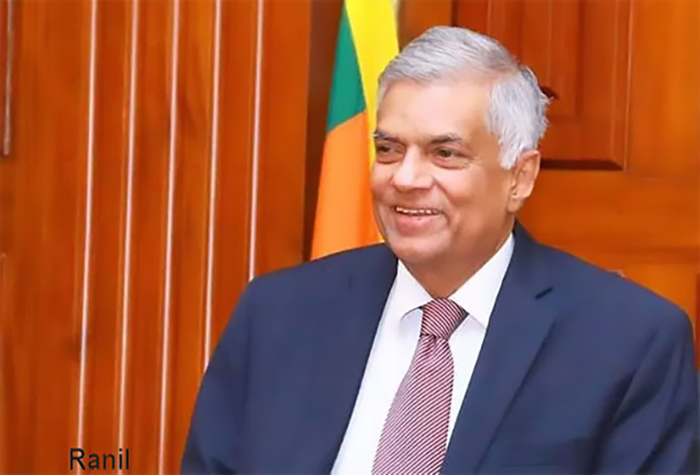
In the despicable absence of an urgent practical response on the part of the JVP-Anura Kumara Dissanayake-led NPP government to the devastating 28th March earthquake in Myanmar, ex-president Ranil Wickremesinghe has made a very timely and sensible proposal regarding how to assist our disaster stricken fellow humans in that country. ex-president Wickremesinghe! Thank you very much for saving, at least to some extent, Sri Lanka’s still unsullied reputation as a sovereign state populated by a most humane and hospitable people. You have again demonstrated your remarkable ability to emerge as an able state level troubleshooter at critical moments, this time though, just by being a mentor. It is a pity that you don’t think of adopting a more universally acceptable, less anglophile version of principled politics that will endear you to the general electorate and induce the true patriots of the country to elect you to the hot seat, where you will have the chance to show your true colours!
The ordinary people of Myanmar (formerly called Burma) are remarkably humble, polite and kind-hearted just like our fellow ordinary Sri Lankans. There’s a natural cultural affinity between us two peoples because we have been sharing the same Theravada Buddhist religious culture for many centuries, especially from the 4th century CE, when Buddhism started making gradual inroads into the Irrawaddy Valley through trade with India. Whereas Buddhism almost completely disappeared from India, it flourished in Sri Lanka and Burma. Nearly 88% of the 55 million present Myanmar population profess Buddhism, which compares to 72% of the 22 million population in Sri Lanka. Wickremesinghe has been mindful enough to take a glance at the historicity of close Myanmar-Sri Lanka relations. And he didn’t mince his words while giving some details.
At the beginning of his statement in this connection (which I listened to in a video today, April 1, 2025), Ranil Wickremesinghe said that our government has expressed its sorrow (but little else, as could be understood in the context). Countries near and far from Myanmar including even partly affected Thailand, and India, China, and distant Australia have already provided emergency assistance. Referring to the special connection we have with Myanmar as a fellow Theravada Buddhist country, he said that both the Amarapura and Ramanna nikayas brought the vital higher ordination ritual from there. We must help Myanmar especially because of this historic relationship.
When an earthquake struck Nepal, the birthplace of the Buddha, in 2015, we sent an army team to assist. On that occasion, Sri Lanka was the second country to provide relief, India being the first, with China becoming the third country to come to Nepal’s help. Today, India, Thailand, Malaysia, China and Australia have dispatched aid by now. Last year Sri Lanka gave 1 million US Dollars for Gazan refugees. We need to take a (meaningful) step now.
Wickremesinghe proposed that the army medical corps be sent to Myanmar immediately to set up a temporary hospital there. The necessary drugs and other materials may be collected from Buddhist and non-Buddhist donors in Colombo and other areas.
Emphasising the ancient friendly relationship between Sri Lanka and Myanmar, Wickremesinghe mentioned that King Alaung Sithu I (of the Pagan Dynasty, 1090-1167 CE) sent help to (Prince Keerthi who later became) King Vijayabahu the Great (1055-1110 CE) to defeat and drive away from the island the occupying Cholas after a 17 year long military campaign. The grateful Lankan monarch Vijayabahu, during his reign, offered the Thihoshin Pagoda (name meaning ‘Lord of Lanka’ pagoda, according to Wikipedia) and a golden Buddha image to the Myanmar king. (This pagoda is situated in Pakokku in the Magway region, which is one of the six regions affected by the recent earthquake. I am unable to say whether it remains undamaged. Though the monument was initiated during Vijayabahu’s lifetime, the construction was completed during the reign of King Alaung Sithu I {Wikipedia}).
Wickremesinghe, in his statement, added that it was after this that a strong connection between Sri Lanka and Myanmar started. In some Buddhist temples in Myanmar there are paintings by ancient Lankan painters, illustrating Jataka stories (Stories relating to different births of Buddha). Among these, Wickremesinghe mentioned, there is a painting depicting the duel between (the occupying Chola king of Anuradhapura) Elara and (his young native challenger from Ruhuna prince) Dutugemunu. (Although Wickremesinghe did not talk about it, a fact well known is that there is a copy of our Mahavamsa in Myanmar. In reporting the ex-president’s speech, I have added my own information and information from other sources. I have put this within parentheses)
Let’s hope President Anura Kumara Dissanayake is wise enough to derive some benefit from his predecessor’s mentoring in the name of our beloved Motherland.
Rohana R. Wasala
Opinion
Assisting solar power debate in Cabinet

Authors: Directors of Solar Village SDG CIC
www.solarvilllagesdg.org
I.M. Dharmadasa (Emeritus Professor), Nilmini Roelens (Solicitor) and Saroj Pathirana (Journalist)
The purpose of this article is to inform the Cabinet discussion on Solar Power proposed by the Ceylon Electricity Board (CEB)
Net metering and the Prosumer
The CEB has put forward a motion to the Sri Lankan Cabinet which proposes to reduce the unit price payable under the various net metering schemes to the “prosumer” (the owner of a solar panel system).
A prosumer is a blend of producer and consumer, referring to individuals who both create and consume. This is based on the notion that most producers of electricity through self-owned solar panels generate more than double their own needs as consumers. It thus enables the prosumer to connect to the national grid and receive money on a pay back scheme from the CEB for the excess electricity they produce.
What is this debate about?
Currently there are four schemes.
The Public Utilities Commission of Sri Lanka explains the various schemes involving roof -top solar solutions thus under a heading published in October 2023 – Rooftop Solar PV Connection Schemes. The two most noteworthy schemes are the Net plus and the Net plus plus schemes.
https://www.pucsl.gov.lk/rooftop-solar-pv-connection-schemes/
Through the NET Plus Plus Scheme CEB regards the prosumer as a mini power plant holder which maximises roof top generation well beyond the prosumer’s own needs making maximum use of extra roof space. This would work well for schools and companies with large buildings. CEB used to pay Rs. 37 per unit to the prosumer for up to 500kW. This unit price was available between 26 October 2022 to 1 July 2024. However, as of 1 July 2024 the unit price was reduced to Rs. 27.
We understand the new CEB proposal to the cabinet is to scrap this scheme altogether.
In relation to the Net Plus scheme which is the more accessible and popular scheme for ordinary householders the current CEB proposal is to reduce the unit price even further to Rs. 19 for solar power systems generating less than 20 kW, whilst for those generating between 20 – 100 kW the unit pay back will be Rs.17 and those generating between 100 – 500 kW will receive Rs.15 per unit.
The installation costs of a 5-kW solar panel is now around Rs 1.0 million. The cost of solar panels has in fact come down over the years and the units are recyclable. The lifespan of a solar unit is expected to be in the region of 22 to 25 years. There are now over 300 active solar companies in Sri Lanka. This is a rapidly growing sector with the prospect of generating employment for tens of thousands of young Sri Lankans for many years to come as technicians, administrators and entrepreneurs. The potential advantages for the economy are extensive Sri Lanka’s growth of the renewable energy sector using freely available sunshine available virtually all year-round given the geographical proximity to the equator
It is not just about reducing the electricity bills of the prosumer. This green energy solution would also mean we avoid the heavy annual cost of the import of fossil fuels into Sri Lanka which very seriously affects its balance of payments each year. The unwarranted need for environmentally damaging energy sources like coal, diesel and nuclear (with its inherent dangers and enormous costs), etc., will lead to a meaningless downward spiral of more debt, enhanced climate risk and pollution.
The intermittency argument
The argument of intermittency of renewables is a misguided premise. Some may argue that seasonal variations of renewables such as solar or hydro power may make them unreliable. This can very easily be remedied by investment in a smart grid. This can be done by upgrading the existing transformers and grid lines. A policy decision would be required at cabinet level to advise the CEB to reinvest any profits for this purpose.
Green Hydrogen is the future
Solar generated power can be harnessed to invest in Green Hydrogen solutions which could mean that rather being an importer of fossil fuels, that the rest of the world is turning away from, Sri Lanka becomes an exporter of green hydrogen to countries in the northern hemisphere where sunshine is scarcer.
Picture what it could do to the Sri Lankan economy if, rather than being dependent on imports of polluting and expensive fuel which can exacerbate the climate crisis, we transform our island into an eco-tourist paradise and become an exporter of clean green hydrogen.
Green hydrogen is created by splitting water molecules into its components of Hydrogen and Oxygen. The hydrogen gas can be compressed and stored for export. The minimum voltage required for splitting the water molecule is about 1.50 Volts DC and scaling up and commercialisation is happening throughout the world currently.
Rebranding Sri Lanka as a renewable energy island
To limit imports of fossil fuels for automobiles, a policy decision at governmental level could provide concessions for electric cars for solar roof owners and encourage the use of solar powered charging stations. The annual cost of imports of petrol and diesel would reduce overtime as Sri Lanka encourages clean and green electric cars.
Whilst the rest of the world is turning to renewable energy with alacrity, Sri Lanka ought not turn to fossil fuel imports in breach of its commitments to the international community.
In 2015 Sri Lanka signed up to the United Nations 2030 Agenda. Ahead of the Paris Summit Sri Lanka set out its climate action plan which the UN Framework Convention on Climate Change (UNFCCC) stated “Countries have agreed that there will be no back-tracking in these national climate plans, meaning that the level of ambition to reduce emissions will increase over time.”
(https://unfccc.int/news/sri-lanka-submits-its-climate-action-plan-ahead-of-2015-paris-agreement)
Sri Lanka has a real opportunity to rebrand itself as a renewable energy island. This means moving towards the commitments made at UNFCC – COP25, Sri Lanka Country Statement in Madrid in December 2019:
“Sri Lanka recognises the importance of the role of COP and highlights the need to take effective and definitive steps for finalising the follow up actions of the Paris Agreement.
The rise of the global mean temperature and the resulting changes have created adverse impacts on key sectors of Sri Lanka, such as agriculture, forestry, biodiversity, marine and fisheries, tourism and energy (hydro power) sectors, leading to disastrous effects on its people, ecosystems and economy. According to official statistics from 2008 to 2018, droughts, floods and landslides have affected over 15 million people, and losses and damages resulting from these calamities have been borne by Sri Lanka’s national budget… Sri Lanka is committed to inclusive and participatory climate actions to ensure that affirmative actions are taken to address the vulnerabilities of climate change.“https://unfccc.int/sites/default/files/resource/SRILANKA_cop25cmp15cma2_HLS_EN.pdf
Why is reduction of the unit price a very regressive, harmful measure?
The reduction will discourage the use of clean renewable energy in favour of higher imports and a move towards dangerous and expensive sources of energy.
The consequences of a reduction of unit price will thus be far reaching beyond the loss to the prosumer.
Lithium battery storage options mean that even when the sun stops shining at night or in the wet season the solar panel produced energy can continue to be used. It is very likely that current solar companies will need to diversify to survive and move towards lithium battery storage solutions and inverters so that year long, 24-hour access to energy is available without recourse to the national grid for their customers. As individuals and institutions go off grid CEB’s income will dwindle in the long run as the private sector takes over.
Recommendations to the cabinet
We make the following recommendations to the Government of Sri Lanka:
(i) At present we have a fragile grid, and the CEB should strenuously endeavour to minimise energy leakages and improve the grid by replacing weak transformers and grid lines. Such continuous improvements will enable us to move towards a “Smart Grid” enabling absorption of large amounts of intermittent renewable energies like wind and solar.
(ii) At present we have ~1500 MW of renewables installed, comparable to hydroelectricity. When solar power is plentiful during the daytime, hydro power can be reduced simply by controlling the water flow without any technical difficulties. This is one way of assuring energy storage while balancing the grid energy.
(iii) Another solution for this is pumped-water storage plants. It is important to follow through with such measures which have now been under discussion for some time.
(iv) The future energy carrier is green hydrogen (GH) produced by electrolysing water using both wind and solar. A global Green Hydrogen revolution is taking place, and GH can be used to run vehicles using fuel cell technology. Trains and buses are being run with GH technology in Europe. GH can also be converted into ammonia and methanol to produce fertilizer and be applied for other industrial uses. Sri Lanka must not be left behind.
(v) GH can be stored and burned whenever energy is needed, especially during nighttime. Only water vapour is produced during the burning of hydrogen without any air pollution. Sri Lanka already has the Sobhadanavi LNG plant which is almost ready to use. Since we must import LNG to run this power plant, we should be able to reduce the LNG import bill by half by mixing the natural gas (methane) with the locally produced GH. See here:
(vi) Local solar energy companies should install high quality solar energy systems and provide “after sale services” in accordance with their guarantees.
(vii) PV companies should also be encouraged to collaborate with local electronics departments to manufacture accessories like inverters and other components needed for these systems, creating new jobs, and reducing the total cost of the systems.
(viii) In addition to grid tied solar roofs, the PV companies should also market hot water systems and water pumping systems. As a country reliant mainly on agriculture, solar water pumping and drip irrigation systems, especially in the dry zone, provide a huge potential for increasing food production.
(ix) Battery capacities are improving, and costs are coming down. This can be encouraged pending replacing grid infrastructure.
(x) It is important to increase public awareness through government funded campaigns. The public should recognise the dangers of using imported and expensive fossil fuel and the importance of using renewables.
(xi) The public should also recognise the advantages of having a clean environment, health benefits and enhanced living conditions.
(xii) A community development project called “Solar Village” to empower needy communities, accelerate their sustainable development, reduce poverty and take climate action has been developed over the past two decades. Seven solar villages have been established and funding for three more solar villages have been obtained.
Solar Village SDG, a UK based community interest company has been established to encourage the use of renewables and to pilot programmes which will support sustainable development goals. This includes providing access to a quality education for all via smart rooms which will be set up alongside solar villages in rural schools. Such initiatives could be encouraged and supported.
Opinion
How monks practice Buddhism in Sri Lanka
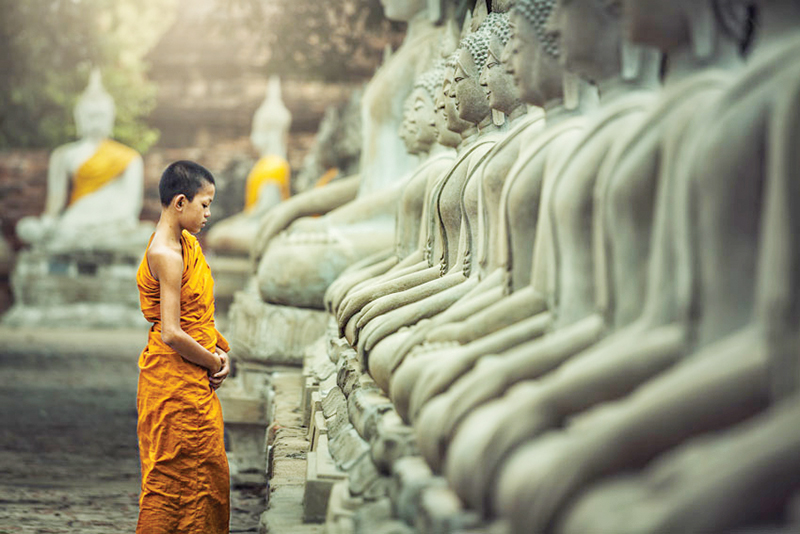
Time was when we had to observe the five precepts chanting in front of the omnipresent Buddha statue in every Buddhist household, and pay homage to parents straight afterwards. Attend mandatory Sunday schools, trek about 6 miles (return) to Moratu Vidyalaya’s main hall together as a family on Fridays to listen to a sermon by erudite visiting monks from the Vajiraramaya and elsewhere.
Having been settled in the UK for half a century, I can only go by what I read and hear from Sri Lankan friends and families. All those practices seem to have changed for the worse, sadly! Living in luxury, temples are run on business models nowadays! Monks ask what they wish to eat at alms-givings, including pork, etc., tell how much it costs the laypeople to invite them, etc! Unbelievable to say the least! I dare say it seems to start from the top of the hierarchy – the Kandy Temples, where the prelates live and are patronised by all politicians from Presidents, Prime Ministers and others! Some monks engaging in politics is not uncommon! For example, a recent statement made by Ven. Dodampahala Rahula Thera during a religious ceremony held to bless former President Ranil Wickremesinghe on his birthday has sparked widespread discussion on social media.
Speaking at the event, Ven. Rahula Thera had claimed that he had advised then-President Wickremesinghe not to import fuel ahead of the 2024 Presidential Election. However, the Thera has since clarified that the remark was made in error due to the pressure of the moment. Pertinent question is why did he choose such intervention?
All these are in such sharp contrast to Buddhist monks in the Western world and South East Asia where they shun luxury to lead a truly monastic lifestyle in order to practise what they preach.
Respected and loved in his own country as a man of great wisdom, Ajahn Cha was also instrumental in establishing Theravada Buddhism in the West. Beginning in 1979 with the founding of Cittaviveka commonly known as Chithurst Buddhist Monastery) in the United Kingdom, the Forest Tradition of Ajahn Chah has spread throughout Europe, the United States and the British Commonwealth. The dhamma talks of Ajahn Chah have been recorded, transcribed and translated into several languages.
More than one million people, including the Thai Royal Family attended Ajahn Chah’s funeral in January 1993 held a year after his death due to the “hundreds of thousands of people expected to attend”. He left behind a legacy of dhamma talks, students, and monasteries. The little I know of Buddhism teaches me to practice His Noble Teachings. It follows therefore the importance of listening to practising Buddhist monks who actually command respect, not by their titles! They don’t mean anything to me. Not familiar with various Nikayas, I think Buddhist monks should have both their shoulders properly covered in the interests of propriety! Though not a vegetarian, I believe in Ahimsa as even little spiders feel pain. Though my wife is scared of them, I tell her they are scared of her, more to the point! So, I catch the innocent crawly creatures by hand to throw them out of harm’s way! We have stopped the practice of throwing inevitable food waste into Council provided bins, instead collect them on a regular basis to feed wildlife we have in abundance around rural Wales we live in. They are all gone the following day including old marrow bones after our two little dogs finish with them! It gives us great pleasure! In the end, it all boils down to respecting Mother Nature! It’s Mother’s Day today to remember Mother Nature and how proud I am of my surname!
Sunil Dharmabandhu
Wales, UK
-

 Business2 days ago
Business2 days agoDaraz Sri Lanka ushers in the New Year with 4.4 Avurudu Wasi Pro Max – Sri Lanka’s biggest online Avurudu sale
-

 News7 days ago
News7 days agoBid to include genocide allegation against Sri Lanka in Canada’s school curriculum thwarted
-

 Business3 days ago
Business3 days agoStrengthening SDG integration into provincial planning and development process
-

 Features21 hours ago
Features21 hours agoStarlink in the Global South
-

 Business2 days ago
Business2 days agoNew SL Sovereign Bonds win foreign investor confidence
-

 Sports4 days ago
Sports4 days agoTo play or not to play is Richmond’s decision
-

 Features21 hours ago
Features21 hours agoModi’s Sri Lanka Sojourn
-

 Latest News6 days ago
Latest News6 days agoIPL 2025: Rookies Ashwani and Rickelton lead Mumbai Indians to first win




